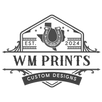3D printing technology has rapidly transformed numerous industries, and education is no exception. By integrating 3D printing into educational settings, we are not only enhancing the learning experience but also preparing students for the future. This revolutionary technology provides students with hands-on learning opportunities, fosters creativity, and bridges the gap between theoretical knowledge and practical application.
The Role of 3D Printing in the Classroom
One of the primary benefits of 3D printing in education is the ability to turn abstract concepts into tangible objects. For instance, in subjects like mathematics and engineering, students can print out 3D models to better understand complex structures and geometric designs. This hands-on approach helps cater to various learning styles, particularly for visual or kinesthetic learners who benefit from interacting directly with physical objects.
3D printing also plays a crucial role in STEM education. By encouraging students to design and print their own projects, we ignite a passion for science, technology, engineering, and mathematics. This practice not only improves students' problem-solving skills but also inspires innovation.
Preparing Students for Future Careers
With industries increasingly adopting 3D printing, gaining experience with this technology prepares students for future careers. From architecture and design to manufacturing and healthcare, 3D printing is becoming an essential skill in the job market. By familiarizing students with this technology, we are equipping them with the tools necessary for success in the evolving workforce.
Customizable Educational Tools
3D printing allows for the creation of customizable educational tools, which can cater to diverse learning needs. For example, special education teachers might use 3D printed models to create tactile learning resources for students with visual impairments. These custom models enrich the educational experience by providing alternative methods of engagement and communication.
Related Product: Lyman Type Prep Tools Holder
While discussing the applications of 3D printing in educational environments, it's worth noting how practical and organizational tools, like the Lyman Type Prep Tools Holder, can be innovatively designed using this technology. This product exemplifies how 3D printing can create durable, customized solutions that benefit various educational and professional settings.
Conclusion
The integration of 3D printing into education is shaping the future by making learning more interactive, engaging, and relevant. As we continue to explore the possibilities of this technology, educational institutions have the opportunity to adapt their curricula to prepare students for the demands of the modern world. By fostering creativity and innovation, 3D printing not only enhances learning experiences but also helps students develop critical skills for the future.
Discover more about the exciting world of 3D printing and its diverse applications by visiting WM Prints.





